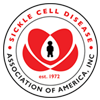Trusted Resources: Evidence & Education
Scientific literature and patient education texts
Desire for Parenthood and Reproductive Health Knowledge in Adolescents and Young Adults With Sickle Cell Disease and Their Caregivers
source: Pediatric Blood & Cancer
year: 2017
authors: Nahata L, Caltabellotta NM, Ball K, O'Brien SH, Creary SE
summary/abstract:Background/Objective:
Sickle cell disease (SCD) and hydroxyurea have implications for fertility and reproductive health. The goal of this study was to examine desire for parenthood and reproductive health knowledge among a cohort of adolescent and young adult (AYA) with SCD receiving hydroxyurea and their caregivers at a large pediatric academic center.
Methods:
Patients with SCD were approached from September 2016 to July 2017 if they were: (1) 12-20 years old, (2) prescribed hydroxyurea for at least 6 months, (3) proficient in English, and (4) accompanied by a caregiver who was proficient in English and willing to participate. Participants self-reported sociodemographic characteristics and completed surveys to assess their/their child’s desire for parenthood and other life goals, and reproductive health knowledge.
Results:
Eighteen patient-caregiver dyads completed the study (78.3% of those eligible); 61.1% indicated that they wanted to have future biological children. Few participants reported receiving information about fertility (16.7% of AYA and 27.8% of caregivers) or birth control (11.1% of AYA and 22.2% of caregivers) from their/their child’s health care provider, and the majority had received no information on these topics. Less than half of participants reported that SCD (22.2% of AYA and 50.0% of caregivers) or hydroxyurea (11.1% of AYA and 27.8% of parents) could potentially impair fertility.
Conclusions:
Biological parenthood was important to this cohort yet fertility and reproductive health knowledge was low, suggesting that clinicians should prioritize conversations about infertility risk and birth control options with AYA with SCD on hydroxyurea and their caregivers. More research is needed to identify optimal approaches to these discussions.
DOI: 10.1002/pbc.26829
read more full text
Related Content
-
Stigma and pain in adolescents hospitalized for sickle cell vasoocclusive pain episodesOBJECTIVES: Sickle cell disease (SCD) p...
-
Inflammatory molecule reduction with hydroxyurea therapy in children with sickle cell anemiaChildren with sickle cell anemia (SCA) s...
-
Gene therapies could transform the treatment of sickle cell diseaseManny Johnson keeps catching h...
-
bluebird bio Presents New Data from HGB-205 Study of LentiGlobinTM Drug Product in Patients with Transfusion-Depende...First patient with severe sickle cell di...
-
Sickle Cell Disease Management & Complications: Sophie Lanzkron MD of Johns HopkinsStuck on sickle cell disease? We hammer ...
-
Blood Transfusions: How, Why, and When? (Part 1)https://www.youtube.com/watch?v=KRjjp0Jw...
-
Kids Who Need Sickle Cell Meds Don’t Always Get ThemLess than a fifth of U.S. children with ...
To improve your experience on this site, we use cookies. This includes cookies essential for the basic functioning of our website, cookies for analytics purposes, and cookies enabling us to personalize site content. By clicking on 'Accept' or any content on this site, you agree that cookies can be placed. You may adjust your browser's cookie settings to suit your preferences. More Information
The cookie settings on this website are set to "allow cookies" to give you the best browsing experience possible. If you continue to use this website without changing your cookie settings or you click "Accept" below then you are consenting to this.




 +myBinder
+myBinder
